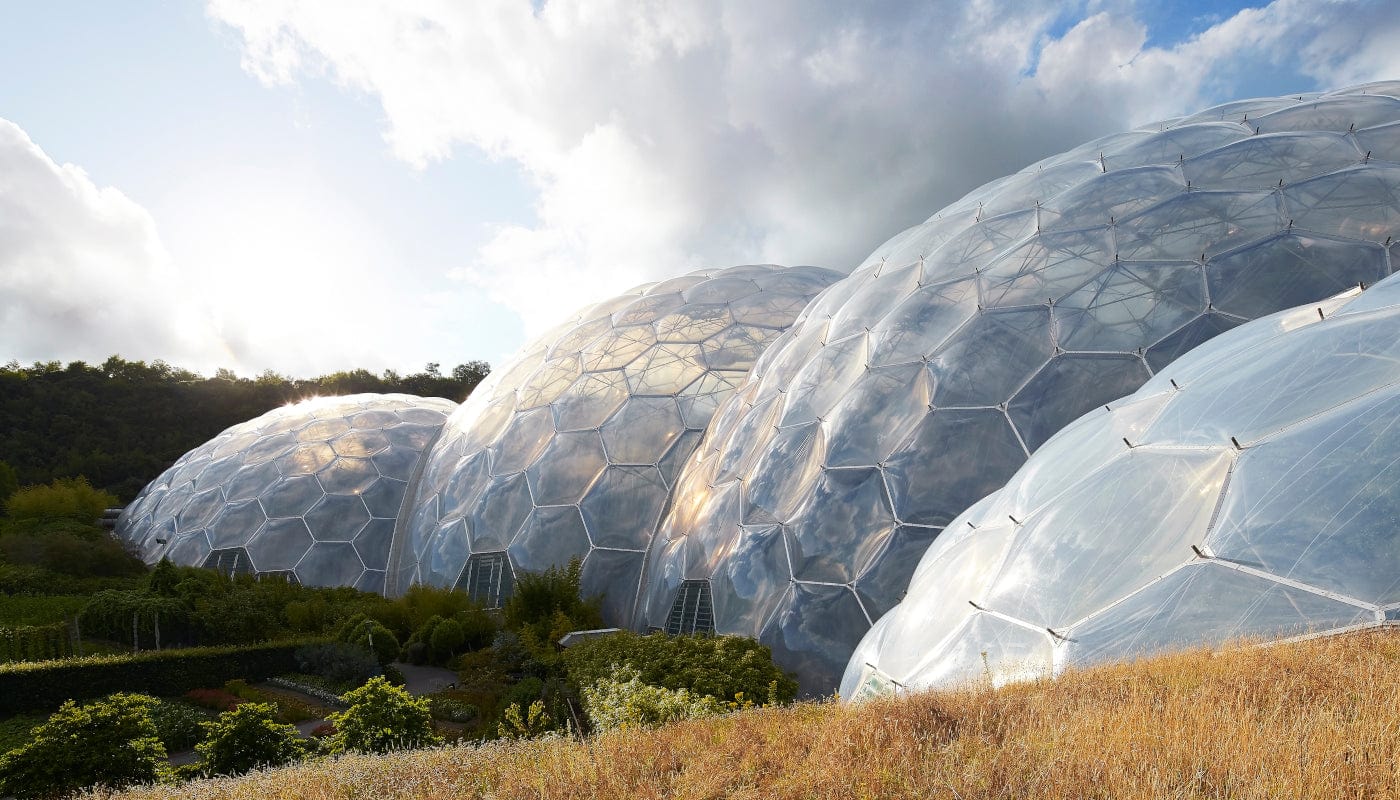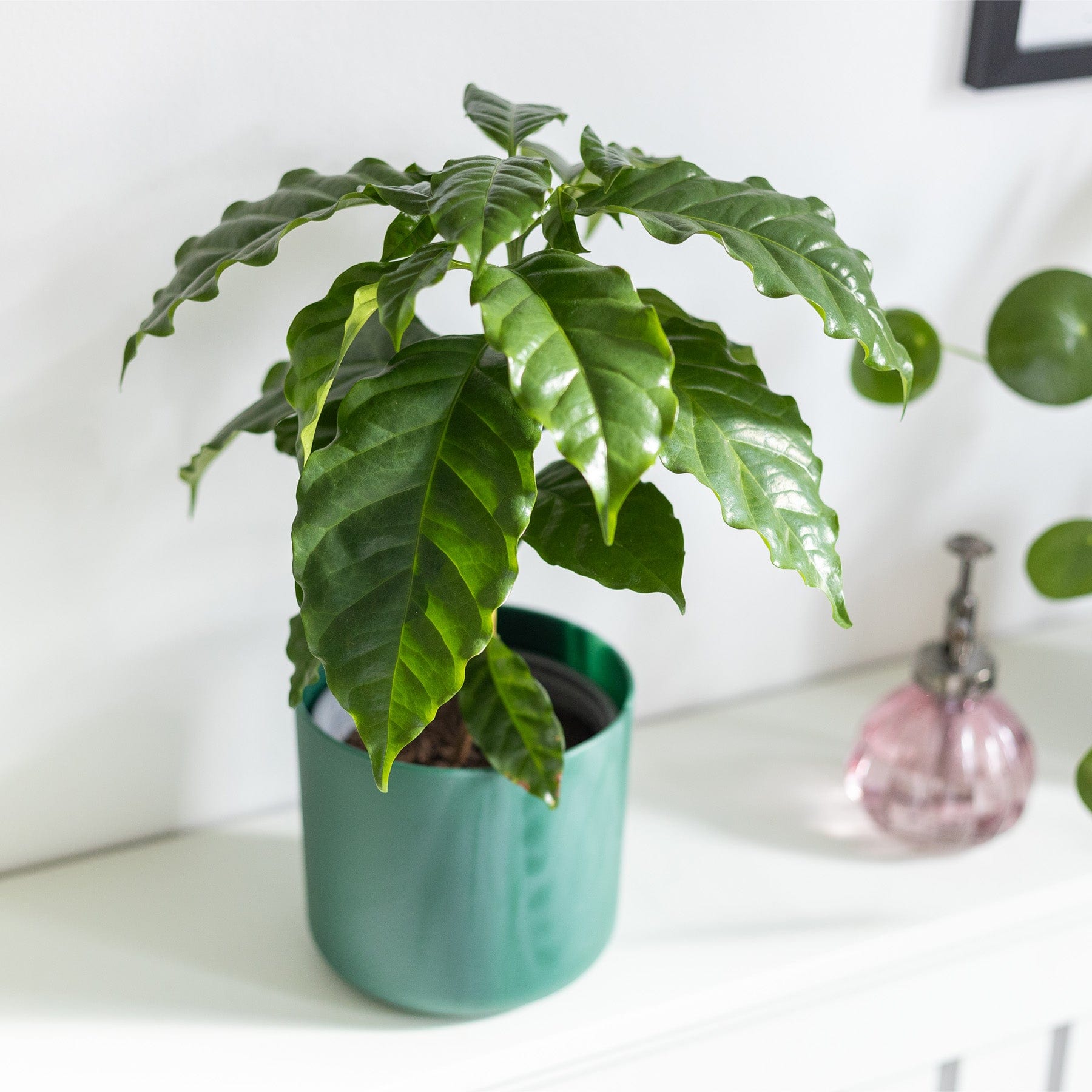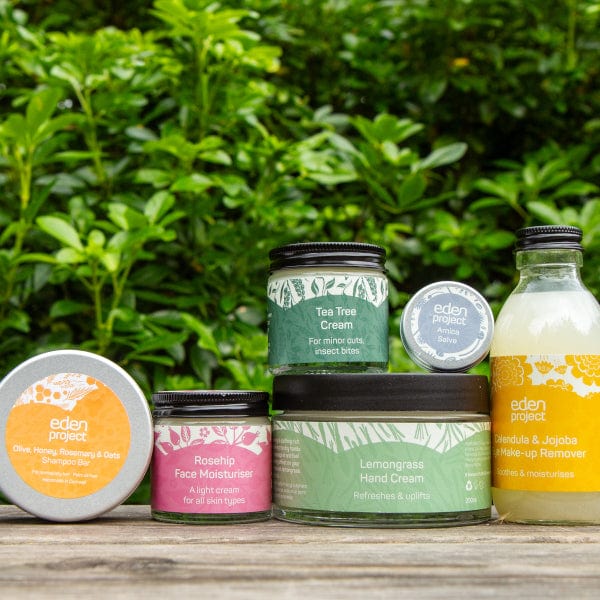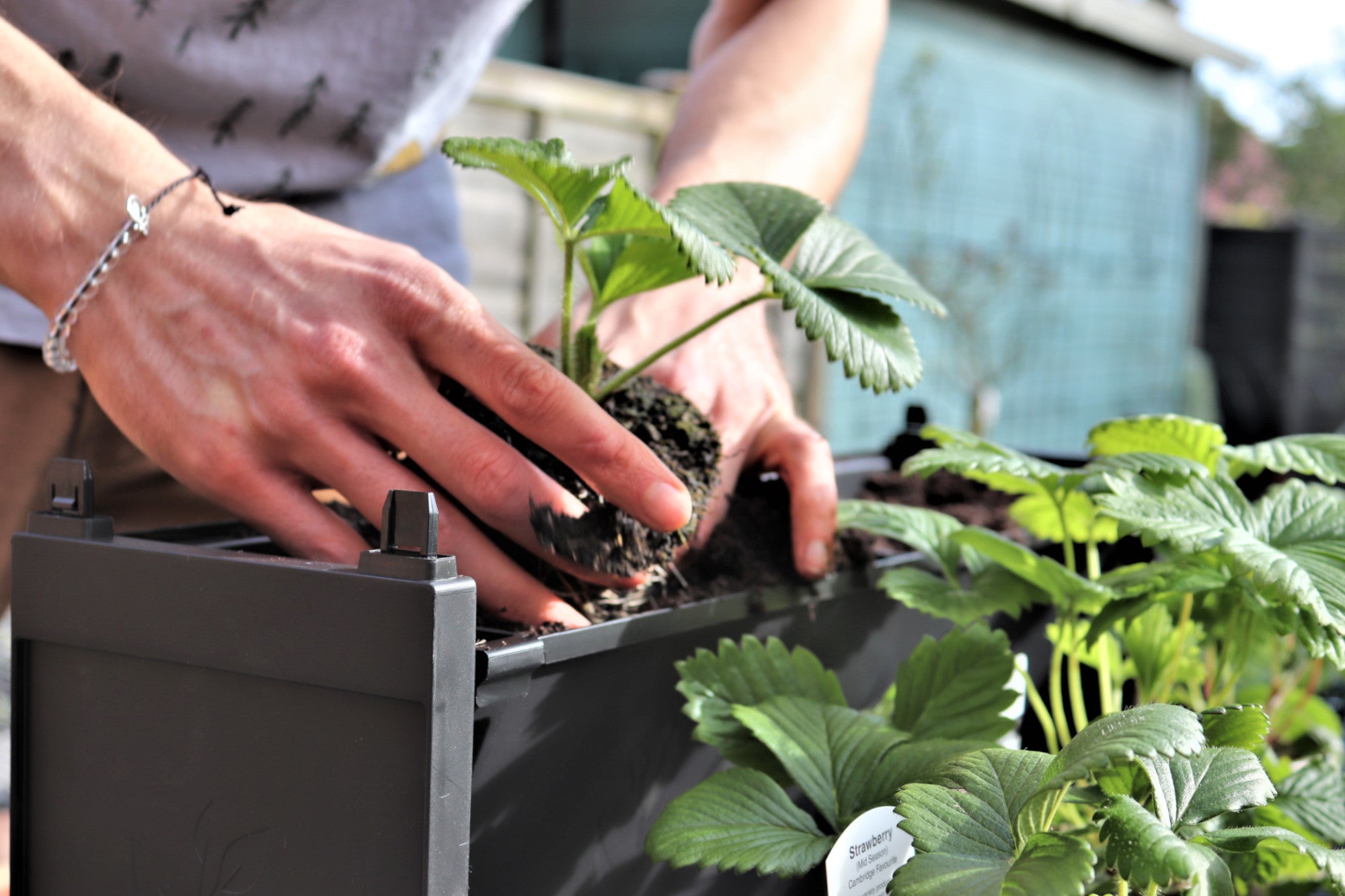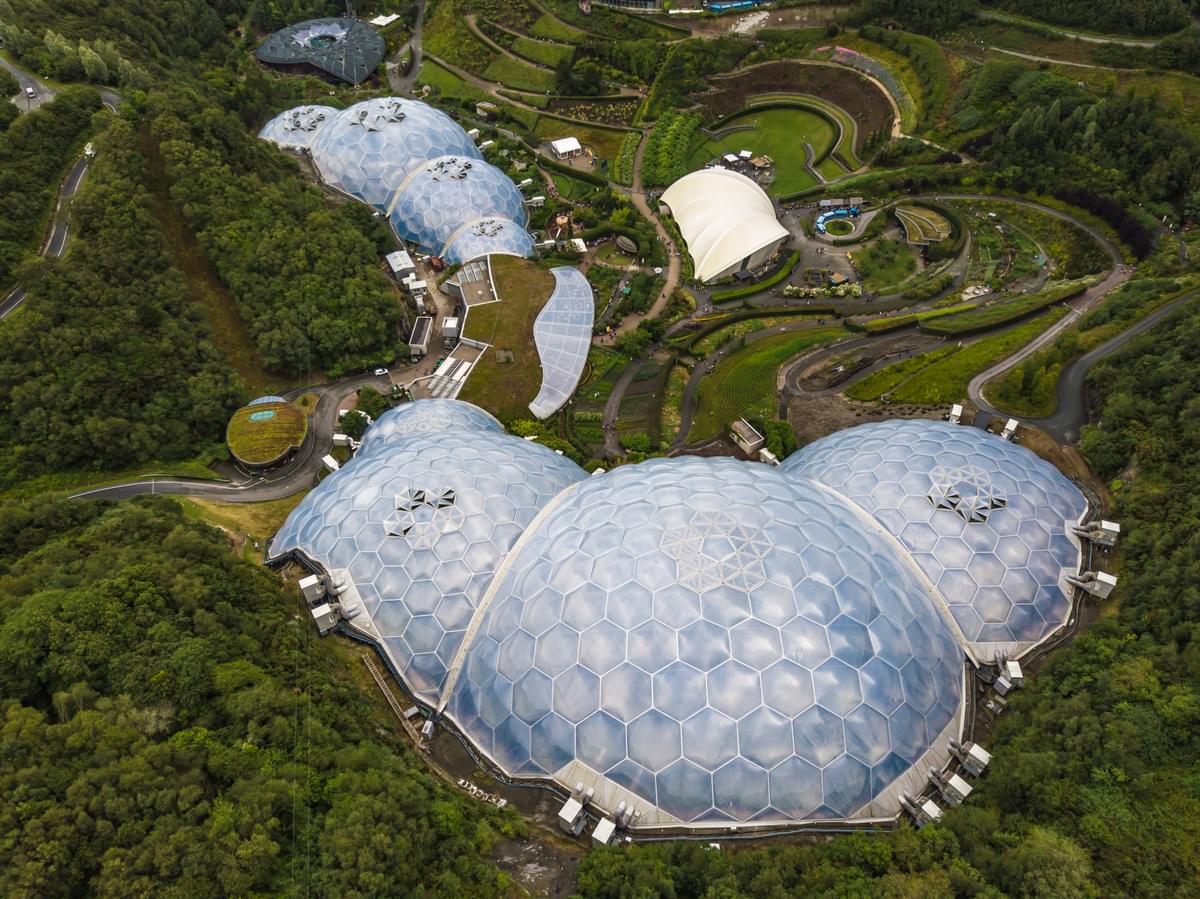How to implement vertical farming at home
As the global population continues to grow at a rapid rate, so does the demand for food. Keeping up with this demand, and securing good food for all, will require agricultural diversification. In addition, with the current system, food production is a leading cause of climate change and biodiversity loss, and so finding better ways of growing crops will be essential for healthy people and a healthy planet in the future. Growing vegetables in an allotment or garden, and vertical farming in smaller spaces are two ways we can all help change the game and shift the system towards more sustainable food production methods for future food security for generations to come. Eating homegrown vegetables is also one of the best ways to improve your diet and health, become more self-sufficient, and keep food costs down.
If you’re interested in ways you can help shift the demand for industrially-farmed produce, and reduce your environmental impact when it comes to food production and consumption, keep reading as we dive into how you can start vertical farming at home and the benefits it can have for people and the environment.
What is vertical farming?
Vertical farming is an agricultural method whereby food is grown in vertically stacked layers, rather than horizontally like we see in traditional farming methods. Vertical farming allows for much more food to be produced in a smaller area. This technique is used most often indoors or in urban settings as it allows for high-density crop production in small spaces. You may have seen vertical farming integrated into spaces that would typically be unsuitable for farming, such as skyscrapers, warehouses and shipping containers.
There are many different ways vertical agriculture can be implemented, from wooden pallets turned into vertical planters in your garden to large-scale tower vertical farms, rack systems and container farms; vertical farming can be adopted on any scale. There are both commercial ways to practice vertical farming as well as at home.

The most common types of vertical farming are:
- Hydroponic vertical farming
Hydroponic vertical farming is the most commonly used vertical growing system. It involves the roots of the plants growing in a water solution that contains only the essential nutrients the plants need to survive. The composition of this nutrient-rich water is adjusted regularly to ensure the plant has constant optimal growing conditions. Using this method, plants cannot dry out, evaporation is minimal and water can be recycled, it therefore conserves water compared to conventional farming. .
- Aeroponic vertical farming
Another method of vertical farming is the use of aeroponics, which is a variant of hydroponics. The aeroponic method allows plants to grow in air or mist that is sprayed on the plant roots several times an hour, to help the plants grow with minimum water usage. This method can help plants grow faster as it allows for their roots to be better aerated and is arguably one of the most efficient vertical farming systems as it consumes up to 90% less water than hydroponic methods.
- Aquaponic vertical farming
Aquaponics combines the processes used in hydroponics and aquaculture. In aquaculture, organisms are grown in water and in hydroponics, plants are grown without soil. By combining these techniques fish can be cultivated and their waste used to fertilise the plants, whilst the plants purify the water for the fish. This is not the most commonly used method as it requires a broad knowledge of aquaculture and can often require a long start-up period.
- Vertical crop planting at home
Vertical farming can be implemented at home or in a garden or allotment using a vertical planter, and typically involves using soil as the growing medium. Most at-home vertical planters are made from wooden structures or stacked containers, filled with soil and compost, however, it is also possible to adopt hydroponic or aeroponic methods on a smaller scale.
How to implement vertical farming at home
Just like traditional farming practices, vertical farming requires the right conditions for crops to grow to their full potential. It can be difficult to create a delicate balance between temperature, light, water and humidity in vertical farming, especially if you are planting in more urban areas, however, these factors must be maintained in order to ensure a successful harvest. Read on to learn a few of the key things you should consider when choosing to create your own vertical farming system at home.
Choose the right space and location
At-home vertical farms generally don’t require too much space, however, the amount of space you have available will determine the size of the structure and types of food you can grow. If you’re growing food in your vertical garden to become more self-sufficient, a small space will do, however, if you’re planning on growing and selling your produce, you will need to ensure you have ample space to make it worthwhile. The location of your vertical garden will also determine the types of crops you can grow. You can build your vertical garden almost anywhere in your home, as long as there is enough floor space and height to accommodate the structure.
If you’re planning to grow indoors then you will need to place your vertical structure in a space that has easy access to electricity, water, lighting and appropriate ventilation. This may be a sunny corner of a room, or even a grow tent or empty cupboard, as long as you provide artificial lighting and ventilation. If you wish to grow your produce outdoors, we recommend that you place your vertical structure in a sunny corner of the garden or in a greenhouse.
Choose the type of crop you want to grow
Before you decide on which type of vertical planter to use, it's best to choose the vegetables and fruits you want to grow, as this will determine the best type of structure to choose. You can grow almost any type of crop on your vertical farm, however, the most popular crops for vertical farming include:
- Leafy greens such as lettuce, spinach and kale
- Herbs like basil, mint and chives
- Strawberries
- Tomatoes
- Peppers
- Cucumbers

You can choose to either grow these plants from scratch with seeds or use cuttings of already existing plants. Here at the Eden Project Shop, we have a wide variety of seeds to choose from to get you started on your vertical garden.
Pick your vertical structure
There are many different types of structures you can use to create your vertical garden at home such as shelves, wooden palettes, wire racks, towers and stacked-up containers. You can either choose to build your own structure or buy a ready-made vertical planter like this PlantBox vertical planter. It’s important to make sure that your vertical structure is sturdy enough to hold the types of food you wish to grow.
 |
 |
| PlantBox vertical planter |
If you’re looking for an easy way to start a vertical garden at home, this PlantBox has a unique watering system to make looking after your plants easy. With the option to choose from three different sizes; mini (3 troughs), medium (5 troughs) or large (10 troughs), this vertical planter is lightweight, sturdy and easy to assemble. Perfect for those with limited space, this vertical trough offers good planting depth for a huge range of plants, fruits and vegetables. Each planting trough has a 1.8-litre water reservoir to ensure your plants have enough for 1 to 2 weeks, depending on the location and type of plants. Made from 100% recycled plastic, this vertical planter can be easily attached to garden walls, fence posts or balcony railings so you can create your own garden in any space.
Choose your growing media
Once you have decided on the type of crops you wish to grow and the vertical structure that best suits your space, you must now decide on the type of media in which you want to grow your crops. Vertical plants that use soil as a growing medium are a straightforward and common option however you can also choose soilless vertical growing systems such as hydroponics and aeroponics as discussed above.
Each growing media has its own benefits and drawbacks depending on the space you have available, the type of crops you are growing and what kind of maintenance is required to keep the conditions right. This can be made easier through the use of automated systems that control the humidity, water and light such as drip systems, water pumps and timers. Although you can grow your plants using just water, most growers will go for soil. It's important that you choose the right type of soil and compost that is best suited to the crop. The type of nutrients your plants need and frequency of application will also depend on the crops you are growing. Natural fertilisers and growth boosters can help your plants to thrive and result in higher yields. To create the right kind of soil structure, there are various types of natural additives available including pebbles, clay, and recycled coconut fibre (coir), most of that can be mixed into the compost. Browse through our full range of compost and soil improvers to find the right solution for you.

Ensure you have adequate lighting
If you are planning on putting your vertical planter indoors, you will need to consider how your plants will receive adequate lighting. If you place your vertical planter in a room that receives plenty of sunlight all day, such as a conservatory, then an artificial light will not be necessary, however, if you choose to put your planter in a dark space such as a cupboard or garage, you will need to invest in grow lights. The different levels of lighting needed will depend on the type of crops you are growing, however, LED and plasma lighting are the most common.
Protect against pests
As is the case with traditional farming methods, vertical farming also requires you to protect against unwanted pests and plant diseases. While soilless growing methods such as hydroponics are generally less susceptible to diseases and parasites, there is still a chance that some pests may get into these systems. Therefore we suggest investing in natural pest control products to help combat invasion such as neem oil and bug control spray.
What are the benefits of vertical farming?
All vertical farming methods have their own advantages and disadvantages for both the grower and the environment. When employed on an industrial level, advantages can include:
- Utilising less space
Compared to traditional farms that need vast areas of fertile arable land, vertical farms are designed to expand upwards, allowing greater productivity on a smaller area of land. Vertical farming methods can allow farmers to use up to 99% less land, producing yields up to 240 times that of traditional farms. These methods are going to become increasingly favourable as the world becomes more urbanised, as it will allow us to keep up with the higher demand for food in areas where land is hard to come by. Depending on the type of crop grown, one acre of vertical farm can grow the equivalent of 10 to 20 soil-based acres. Reducing further land clearing for farming could also help slow the rate of habitat and biodiversity loss.
- Increasing food security
Vertical farming can offer more consistent year-round crop production, unlike traditional farming methods which are largely dependent on seasonal patterns and weather conditions. This in turn could bring increased food security and reduce seasonal variability. Vertical farms can also reduce harvest times and improve the volume of yields. Farming in this well-monitored and controlled environment can bring peace of mind to commercial growers as continuous crop production allows them to commit to regular delivery schedules to produce food more consistently.
- Resilience to adverse weather conditions
Most industrial vertical farms are grown in fully enclosed and controlled environments, where temperature, water, light and humidity are all kept to optimum levels to ensure the highest quality yields. This protects them from the effects of adverse weather. In traditional farming practices, crops can be lost to excessive rain, drought, wind or pests, therefore vertical farming has greater harvest certainty.
- Reducing chemicals and pesticides
As vertical farming methods are closely monitored to ensure correct growing conditions, pests rarely enter the controlled environment, therefore vastly reducing the need for pesticides. This means crops can be produced reliably, without the use of harmful chemicals.
- Reduced impact on the environment
One of the biggest benefits of vertical farming is how it can lower environmental impact by reducing emissions and minimising water use. One of the main industrial vertical farming methods, hydroponics, uses 98% less water than what’s used in traditional farming practices. In addition, the water that is used remains clean, allowing it to be easily recycled and reused.
Since most vertical farms are constructed in urban areas, the distance that produce then has to travel from farm to table is greatly reduced, thus reducing food miles. This also reduces food waste as the produce has a longer shelf life when it reaches the consumer. Unlike traditional crops, there is no need for heavy machinery or farming equipment for ground management and harvesting, which also reduces fossil fuel use and emissions.

